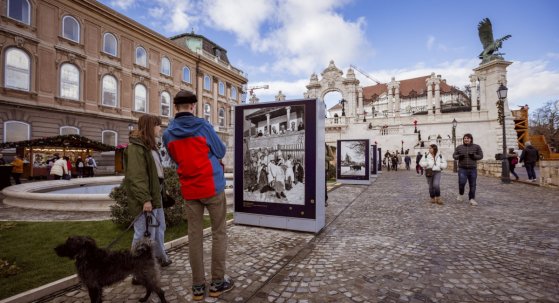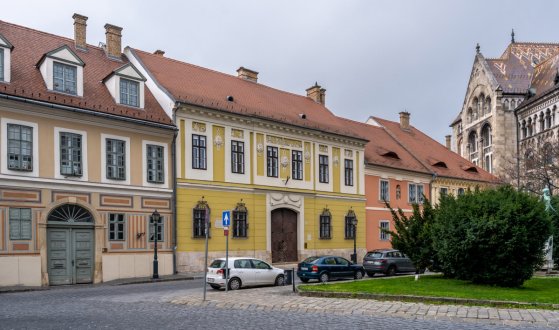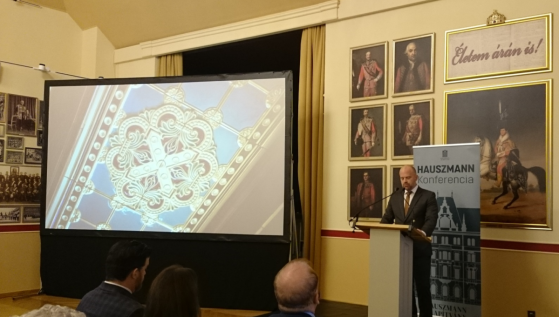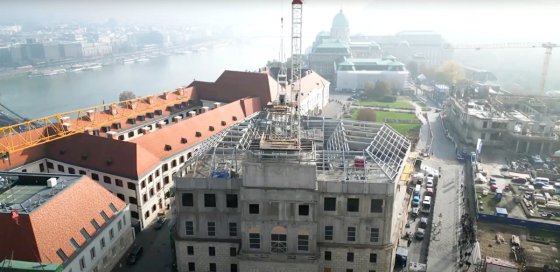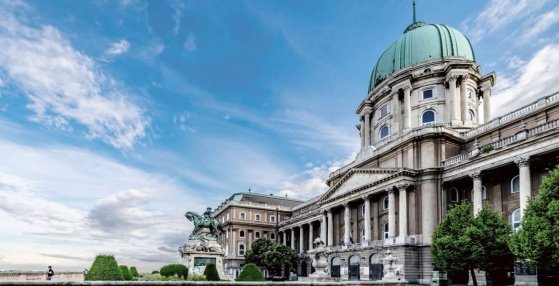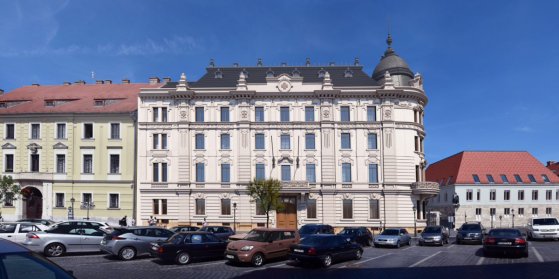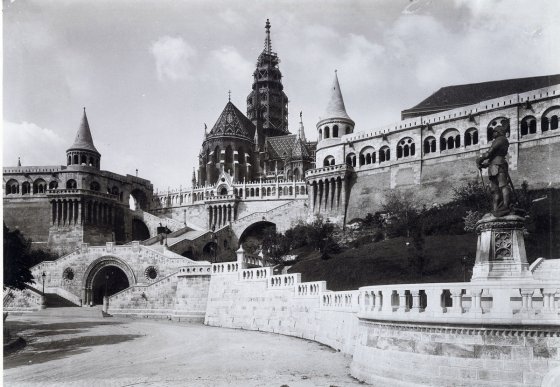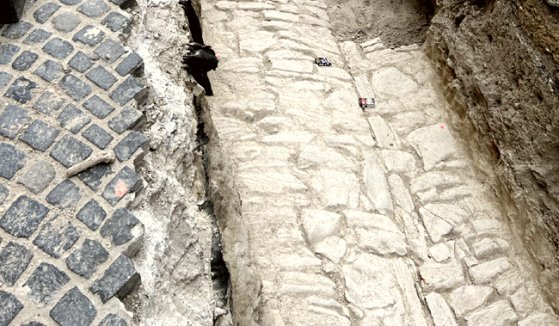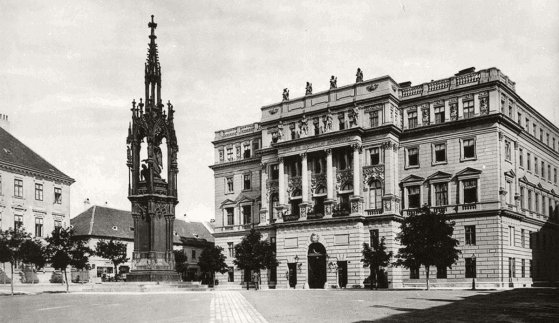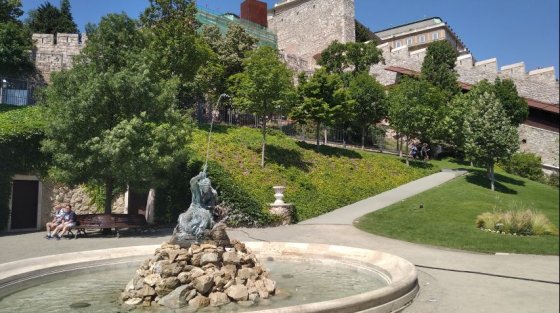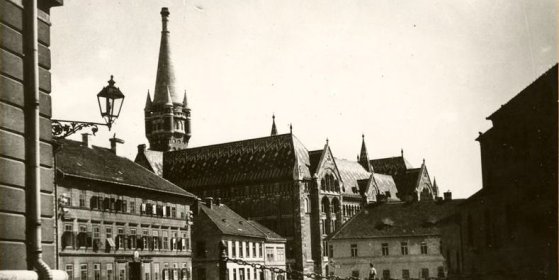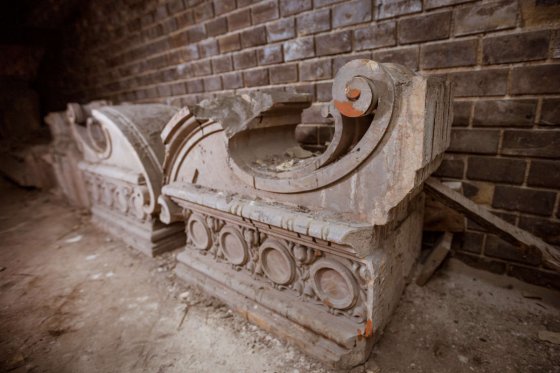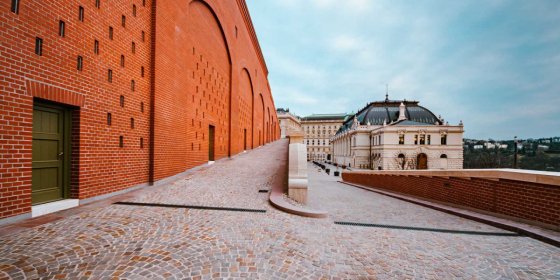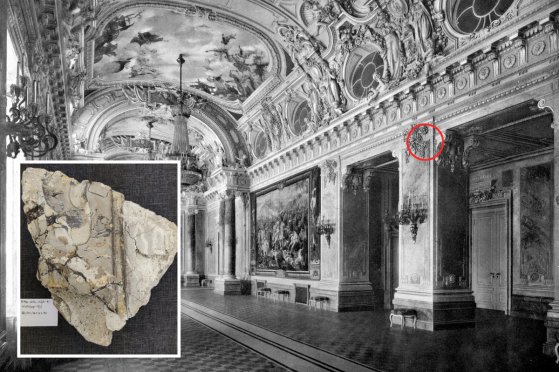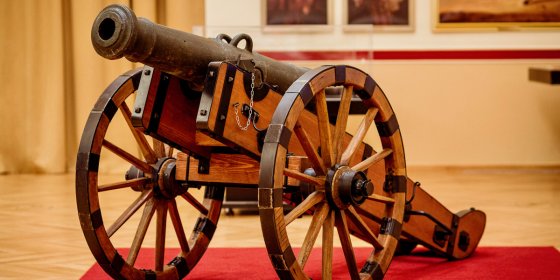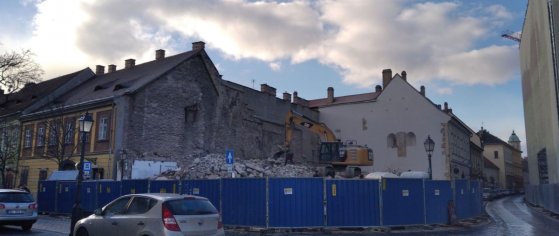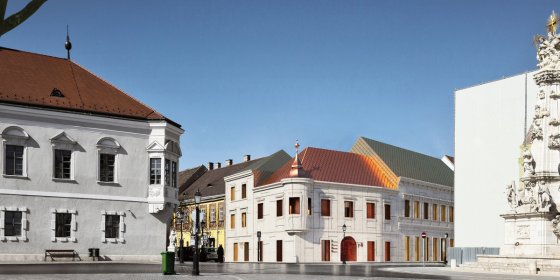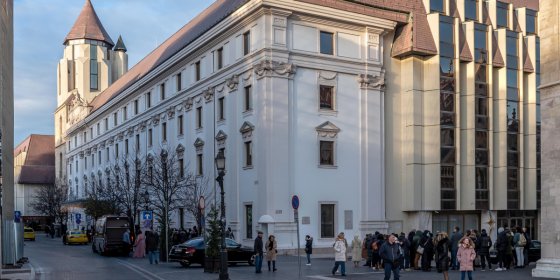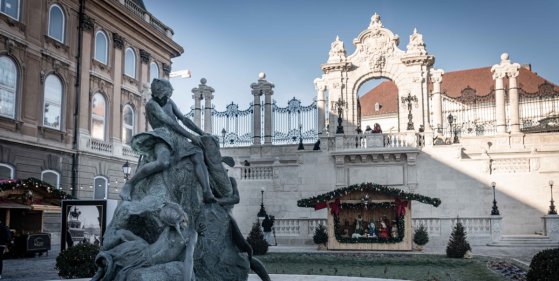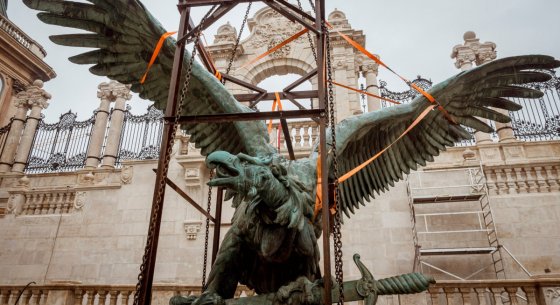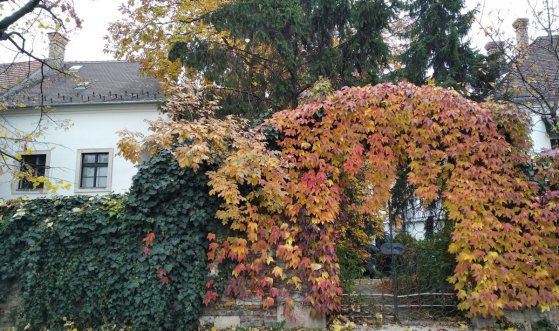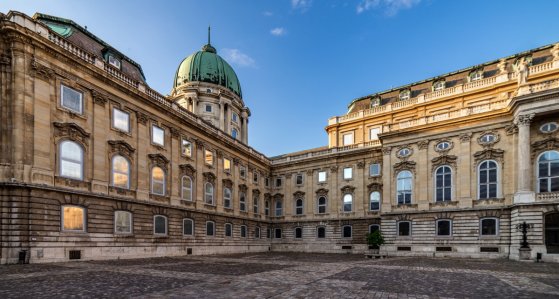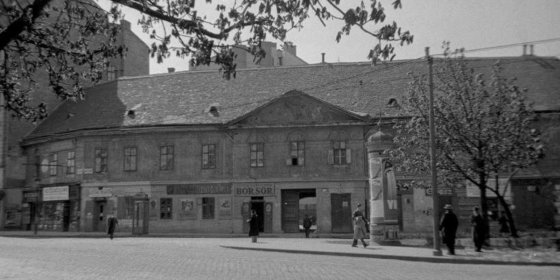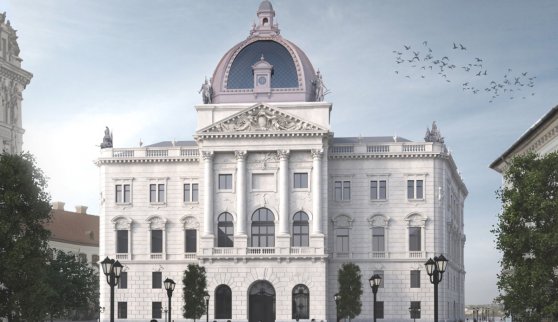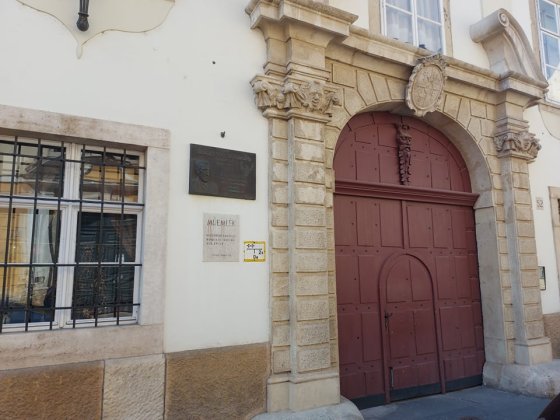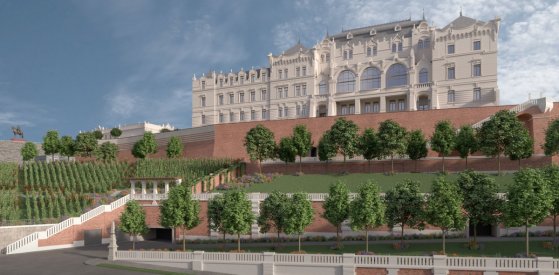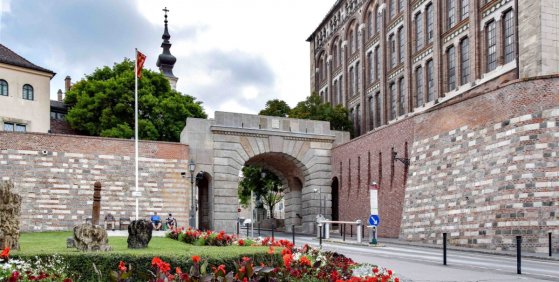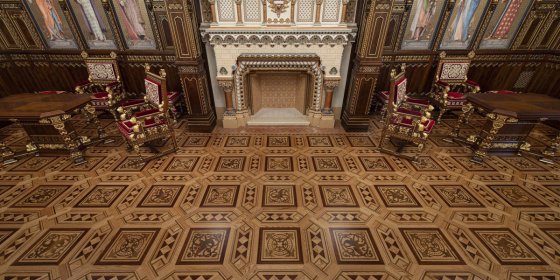 The „intertwined history” of the bridges and the city of Budapest
Which ideas and events have shaped the fate of bridges of Budapest and the cityscape? Alongside many other interesting facts, this question is also answered this newly published book by the Budapest City Archives, which introduces the history of bridges in Budapest.
The „intertwined history” of the bridges and the city of Budapest
Which ideas and events have shaped the fate of bridges of Budapest and the cityscape? Alongside many other interesting facts, this question is also answered this newly published book by the Budapest City Archives, which introduces the history of bridges in Budapest.
Buda Castle
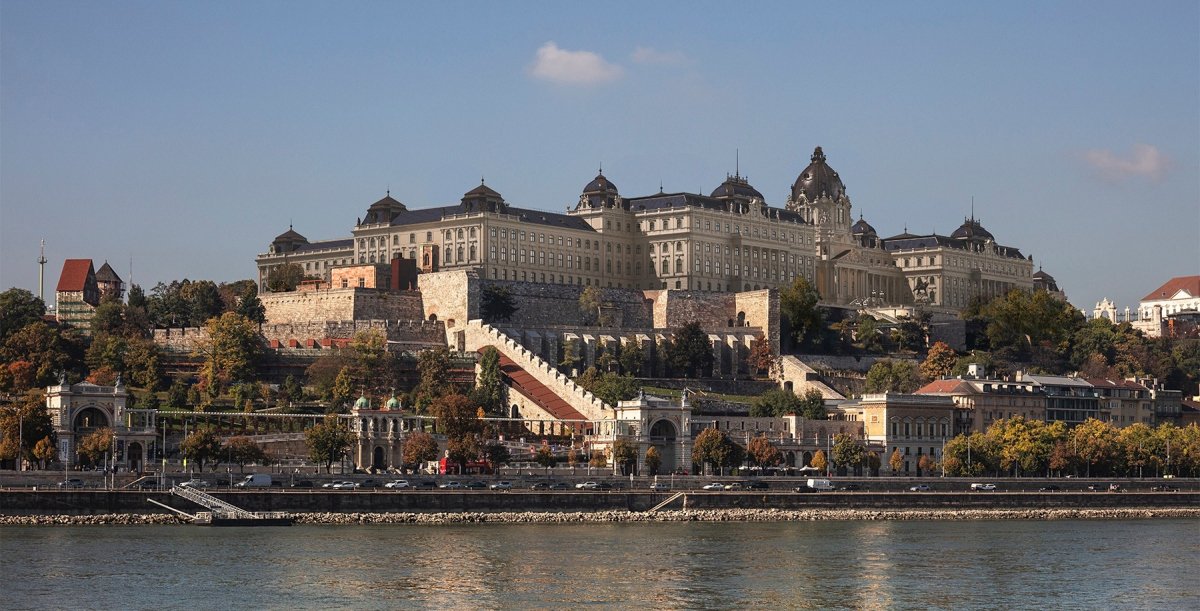 This is what the reborn Buda Castle will look like - From now on, anyone can see the plans
This is what the reborn Buda Castle will look like - From now on, anyone can see the plans
December 20, 2022 at 8:00 PM
The restoration of the Buda Castle has begun, and the visuals for its reconstruction have been published in the past few days, so now we know exactly what the building will look like after the reconstruction is completed. The Neo-Baroque royal palace was built between 1890 and 1905 with a significant expansion of the previous palace, but after 1945 it was rebuilt and simplified due to war damage. Anyone can see the reconstruction plans in the visitor centre that opened on Monday in Hunyadi Court.
Traditions of a vanished world - This is how they prepared for the holiday in the Carpathian Basin
December 6, 2022 at 8:00 PM
The open-air photo exhibition, which opened on 6 December on the Danube-facing terrace of the Buda Castle and in the Castle Garden Bazaar, invites visitors to take a real trip back in time. The old photographs show the Christmas customs of the peoples of the Carpathian Basin, now unknown to many, leading the visitors to a vanished world, to the time of their great-grandparents.
A walk through time - The houses in the Buda Castle tell the story of nearly 800 years of Jewish history
December 3, 2022 at 10:00 AM
Although the history of Budapest's Jews is as old as the city itself, it is less well-known how many places we can find memories of the community and how many houses preserve stories from the Middle Ages to the 21st century. The tour guide of the Buda Castle Walks of the Castle Headquarters has now provided an insight into this during the Shalom, Buda! castle walk to Pestbuda.
In the footsteps of Endre Thék, Miksa Róth, and Gyula Jungfer - Turn-of-the-century fine art and crafts will be taught again
November 26, 2022 at 1:00 PM
In Budapest, several of the previously destroyed buildings of historical importance have been recreated in recent years, but due to the lack of skilled craftsmen, the implementation was a huge challenge. The reconstructions currently underway and planned in the future will be helped by the fact that starting next year, a training course will be launched in which these crafts, which also require artistic talent, can be mastered at a high level - it was announced at the Hauszmann Foundation's conference in Buda Castle on Thursday.
The Headquarters of the Hungarian Defence Forces has reached its highest point
November 10, 2022 at 6:30 PM
The Dísz Square building of the former Hungarian Defence Forces Headquarters (or High Command), which is under reconstruction, has reached its highest point, and the structure of the dome has already been placed on top. On this occasion, following the traditions, a topping-out ceremony was held. The tree together with the steel frame of the roof lantern adorning the dome was raised to the roof of the palace in front of the guests invited to the ceremony.
From the Curia's building to the City Park: the Hungarian National Gallery opened 65 years ago
October 25, 2022 at 10:00 AM
The Hungarian National Gallery is one of the best-known institutions in the country and the capital, which celebrates its 65th anniversary this year. The institution, which collects masterpieces of Hungarian art, opened its doors to visitors on 5 October 1957 in its first home, in the Curia's building on Kossuth Square designed by Alajos Hauszmann, to which the Museum of Ethnography later moved. It occupied its current location, buildings B, C and D of the Buda Castle, in 1975. Within the framework of the Liget Project, the plans for the new home have already been drawn up, although its implementation is still pending.
The former headquarters of the Red Cross Society will soon show its original appearance
September 24, 2022 at 9:00 AM
The reconstruction of the building in Buda, originally designed by Alajos Hauszmann and Dezső Hültl, began in 2021, and recently the structural construction work was completed, so in addition to the construction of the roof and facade, the interior work will start in the autumn. With the reconstruction of the house at 1-2 Dísz Square, a wound in the cityscape that has been open for more than seventy years will be healed.
Skulls under the Fisherman's Bastion - The Forgotten St. Michael's Chapel
September 13, 2022 at 2:30 PM
In the last years of the 19th century, during the works before the foundation of the Fisherman's Bastion, a cavity hiding skulls emerged from the ground, which the architect Frigyes Schulek referred to as one of the Castle's old dungeons. But he could have guessed its original function because he deemed it worthy of preservation, but the place was then forgotten again, only to be found again in the middle of the 20th century: now the place has been identified as the medieval St. Michael's Chapel, which since 1997 has been one of the most interesting details of the Fisherman's Bastion.
Archaeologists have found the road of the Buda Castle from Sigismund-era
September 2, 2022 at 6:00 PM
A large section of a road from the time of Sigismund of Luxembourg, dating from the beginning of the 15th century, was excavated by the staff of the Budapest History Museum at the Buda Castle, in the area below the Savoy Terrace. Medieval and early modern layers can also be observed on the excavated road section.
The plot of the demolished Burg Hotel was transferred to the property manager of the MNB
August 5, 2022 at 5:30 PM
The former Diplomatic House on Szentáromság square was demolished at the beginning of 2022, and a new conference center will be built in its place, the visual plans of which have already been presented. The plot was recently transferred to the property manager of the MNB.
A publicly hated monument in the Castle - The Hentzi "pillar of shame" was inaugurated 170 years ago
July 11, 2022 at 1:00 PM
There have been many monuments and buildings and there are ones still standing in Budapest that remind us of the former occupiers and glorify those who committed crimes against Hungarians. The largest of these is the Citadel, which was built by the Austrian army, specifically for the purpose of threatening the population of Pest and Buda. And a monument in Buda Castle was erected to a man who unjustifiably shot at the city of Pest and its citizens in 1849. The Hentzi Memorial was inaugurated exactly 170 years ago, on 11 July 1852, by Franz Joseph, who defeated the Hungarian war of independence.
Surroundings of Buda Castle - The historic gardens are being renewed
July 9, 2022 at 9:00 AM
The National Hauszmann Program covers not only the reconstruction of the buildings of the Buda Palace District, but also the renovation of the gardens surrounding them. The royal environment at the turn of the century naturally also demanded eye-catching green surfaces, on which an army of gardeners worked. This wonderful environment survived the siege relatively unscathed, but the rebuilding after World War II did not spare it, so in fact these gardens can also be considered huge losers of deliberate destruction.
The building of the National Archives is being reborn - There will be an observation deck in the new tower
June 27, 2022 at 5:00 PM
The renovation and expansion of the National Archives building in Bécsi kapu square will soon begin, and its iconic tower will be built again, where it will become a lookout point. A visitor and education center will also be created in the new building wing, and a garden and terrace will also be connected to the archive.
Original decorative fireplaces were found during the research of the Buda Castle
May 12, 2022 at 1:00 PM
The experts of the Várkapitányság discovered another valuable find during the research carried out in the Buda Castle, as they found a marble fireplace in the dining room between the royal and princely suites, in addition to the ornamental fireplaces of the former Andrássy and Deák foyers in the Krisztinaváros wing. The finds will make a significant contribution to the most authentic reconstruction possible, as the fireplaces have always been in keeping with the room, so they can provide an important point of reference.
Not only spaces, but also ages are connected by the reborn Hauszmann ramp in the Csikós courtyard
March 31, 2022 at 9:00 AM
One of the newest buildings of the Buda Castle connects the Hunyadi courtyard with the Csikós courtyard, starting next to the Royal Guard. Walking along the Hauszmann ramp that is the same as the original, we can not only admire the panorama of Krisztinaváros, but also discover exciting details: the walls of the building preserve the memories of several eras.
Valuable finds were discovered during the research in the Buda Castle
March 29, 2022 at 6:00 PM
Special finds were found during the wall research and basic excavation of the Buda Castle Palace. The fragments, walls and tiles that have just been unearthed are significant because they can help determine exactly what the palace, which was enlarged at the turn of the last century, was based on the plans of Alajos Hauszmann, looked like.
Áron Gábor's copper cannon in the Buda Castle - The people of Budapest can see the artillery device known from the folk song with their own eyes
March 12, 2022 at 5:30 PM
The only authentic copper cannon connected to Áron Gábor, which is known from the famous folk song, can be seen in a worthy place, in the building of the reborn Guard House at the Buda Castle. At the exhibition on the War of Independence of 1848-49, visitors can admire the cannon itself, but there are many other interesting objects associated with the revolution and the period of retaliation shown in the building.
The former diplomatic residence in the Castle was demolished
February 3, 2022 at 9:00 AM
The demolition of the former diplomatic residence, the later Burg Hotel, was completed this week in the Szentháromság Square in Buda Castle, leaving only piles of rubble. The building, designed by György Jánossy and László Laczkovics and completed in 1981 is planned to be replaced by a house that will evoke the exterior of the buildings originally demolished after World War II.
A building fitting the historical environment will be on Szentháromság Square in Budavár, says the designer
January 10, 2022 at 4:30 PM
A house, respecting the historical past, which closely matches the image of the Castle District and the UNESCO World Heritage Site, will be the new conference centre of the Pallas Athene Domus Meriti Foundation in Szentháromság Square, said Ádám Reisz, head of Rapa Architects, the designers of the building. He also explained that the starting point for the reconstruction of the facade was the pre-war state, as there is a wealth of visual information available about this age on which they could based it.
The Hilton Hotel in Budavár was handed over on New Year's Eve 45 years ago
December 31, 2021 at 7:30 PM
The Hilton Hotel, handed over 45 years ago, was built on the site of the city’s most beautiful Baroque monument, a Jesuit dormitory damaged in World War II. Only the western wall of the old building facing András Hess Square remains. Some say that the modern building has been incorporated into the castle environment, others believe that it disturbs the harmonious view of the Matthias Church and the Fisherman's Bastion with its huge block.
New monumental restorations in the Buda Castle - The Habsburg Gate, the Fountain of the Fishing Children and their surroundings have been beautified
December 15, 2021 at 9:00 AM
We can see another part of the surroundings of the Budavár Palace in the same form as it was once created by the great masters of the turn of the century, the architect Alajos Hauszmann, the sculptor Gyula Jungfer, the sculptors Károly Senyei and Gyula Donáth. Yesterday, the Habsburg Gate, its staircase, and the Fountain of the Fishing Children were handed over, after being renovated together with their surroundings. We visited the site, where we could not only see the demanding restoration of these artistic works, but also see a special festive exhibition as well as an intimate Advent fair.
The renovated Turul statue in the Buda Castle was restored to its original location
December 2, 2021 at 5:00 PM
The Turul statue of the sculptor Gyula Donáth was restored to its original location next to the Habsburg Gate in the Buda Castle. The beautified work was placed on its pedestal using a 60-ton giant crane. Specialists performed patina-preserving cleaning and restoration on the work of art, repairing the surface with bronze welding. The inner frame of the statue was also reinforced.
A hidden little street in the Castle - the Babits Mihály Promenade is 85 years old
November 17, 2021 at 4:30 PM
Babits Mihály Promenade is one of the most romantic streets in Budapest. It runs along the castle wall of Buda, and although the tourist traffic is huge nearby, only a few are walking in this relatively hidden area. Yet it was created in the 1930s precisely because it opened up a magical panorama of the entire city, and it was hoped it would attract foreign visitors like sugar.
We can learn about the history of the Buda Castle in the renewed exhibition of the Castle Museum
October 14, 2021 at 9:00 PM
A number of recently discovered works of art, building elements, photographs and other documents are presented in the renewed permanent exhibition in the Castle Museum, which reviews the modern history of the Buda Castle. A 3D reconstruction of the three eras of the palace can be seen: the animations evoke the states created by the medieval, Baroque and Haussmannian expansions. A new temporary exhibition on the relocation of sculptures during the change of regime "Can Ostapenko stay?" can also be seen.
The House of Creation was demolished 85 years ago
October 3, 2021 at 10:00 AM
One of the famous buildings in Buda was the House of Creation (Teremtés-ház), which later, as House of Formation (Alkotás-ház), gave the name of the street. On the facade of the house was a relief called Creation, which was considered one of the most beautiful works in all of Buda. The work probably owes its existence to Haydn's oratorio, The Creation, presented in 1800 at the Buda Castle. The building was demolished 85 years ago and replaced by a six-story house. On the occasion of the anniversary, Pestubda presents the history of the former famous building.
Reconstruction of the Honvéd High Command building in Buda Castle begins
September 30, 2021 at 4:00 PM
The torso of the Honvéd High Command, originally designed by Mór Kallina, located on Dísz Square, will regain its original form during the reconstruction, and its useful area will more than triple. In the future, it will function as a visitor center, the cultural and tourist gateway of the Buda Castle district.
Africa researcher, hunter and writer Zsigmond Széchenyi was evicted from the Buda Castle
September 27, 2021 at 9:00 AM
One might think that the life of a world traveller and Africa researcher is enviable. However, this is not necessarily the case with Zsigmond Széchenyi: one of the most significant Hungarian travellers and hunters of the 20th century was dragged and evicted from the Buda Castle by the communist regime. As part of the ‘One with Nature’ World of Hunting and Nature Exhibition, an exhibition of his photographs taken during the expeditions will open at the Capa Centre in Budapest.
The foundation of the Archduke's Palace in Buda Castle is already under construction
September 24, 2021 at 4:00 PM
Work on the foundations of the former palace of Archduke Joseph began in Buda Castle, Szent György Square. The building will be rebuilt according to the original plans under the National Hauszmann Program.
The newest Vienna Gate is eighty-five years old
September 2, 2021 at 9:00 AM
Eighty-five years ago, in 1936 the Vienna Gate of the Buda Castle was rebuilt. The plan had already been conceived six years earlier, but because of the economic crisis the financial backing could only be secured for that time. The occasion for the construction was the two hundred and fiftieth anniversary of the recapture of Buda, which was on 2 September 1686.
The Neuschlosz Brothers created the inlaid parquet floor of the St. Stephen's Hall
September 1, 2021 at 3:30 PM
From 20 August, anyone can visit the rebuilt St. Stephen's Hall in the renewed south connecting wing of the Buda Castle. The beauty and uniqueness of the ballroom are enhanced by its special inlaid parquet flooring. But who created this unique flooring? Take a look at the work of the Neuschlosz Brothers.
More articles
 The „intertwined history” of the bridges and the city of Budapest
Which ideas and events have shaped the fate of bridges of Budapest and the cityscape? Alongside many other interesting facts, this question is also answered this newly published book by the Budapest City Archives, which introduces the history of bridges in Budapest.
The „intertwined history” of the bridges and the city of Budapest
Which ideas and events have shaped the fate of bridges of Budapest and the cityscape? Alongside many other interesting facts, this question is also answered this newly published book by the Budapest City Archives, which introduces the history of bridges in Budapest.
 The Bridge Report, which brought a turning point in the history of Budapest
A travel report that changed the history of Pest and Buda, as well as Hungary. The little book contributed to the change of half a thousand years of legal customs and the implementation of an investment of unprecedented size and technical quality. This book was The Bridge Report [Hídjelentés in Hungarian].
The Bridge Report, which brought a turning point in the history of Budapest
A travel report that changed the history of Pest and Buda, as well as Hungary. The little book contributed to the change of half a thousand years of legal customs and the implementation of an investment of unprecedented size and technical quality. This book was The Bridge Report [Hídjelentés in Hungarian].
 Drama on the university wall - The heroic monument was planned 95 years ago
In the constant hustle and bustle of the Egyetem Square in Pest, the students may not even notice the monument that decorates the short section of wall between the church and the central building of ELTE. However, it commemorates their predecessors, the heroes who fought for their country in World War I, and those who heroically helped them. The first design of the dramatically collapsing soldier was born in 1928, ninety-five years ago.
Drama on the university wall - The heroic monument was planned 95 years ago
In the constant hustle and bustle of the Egyetem Square in Pest, the students may not even notice the monument that decorates the short section of wall between the church and the central building of ELTE. However, it commemorates their predecessors, the heroes who fought for their country in World War I, and those who heroically helped them. The first design of the dramatically collapsing soldier was born in 1928, ninety-five years ago.

